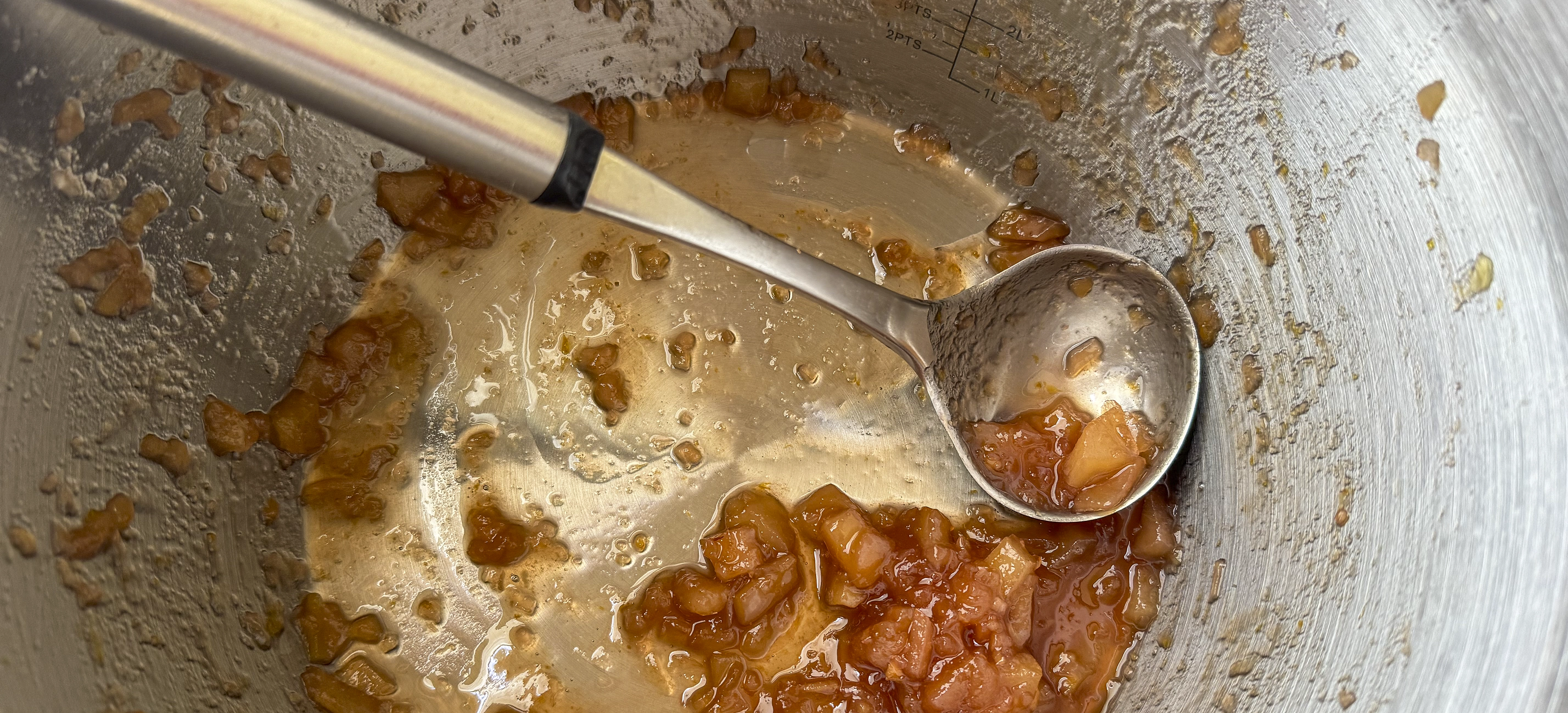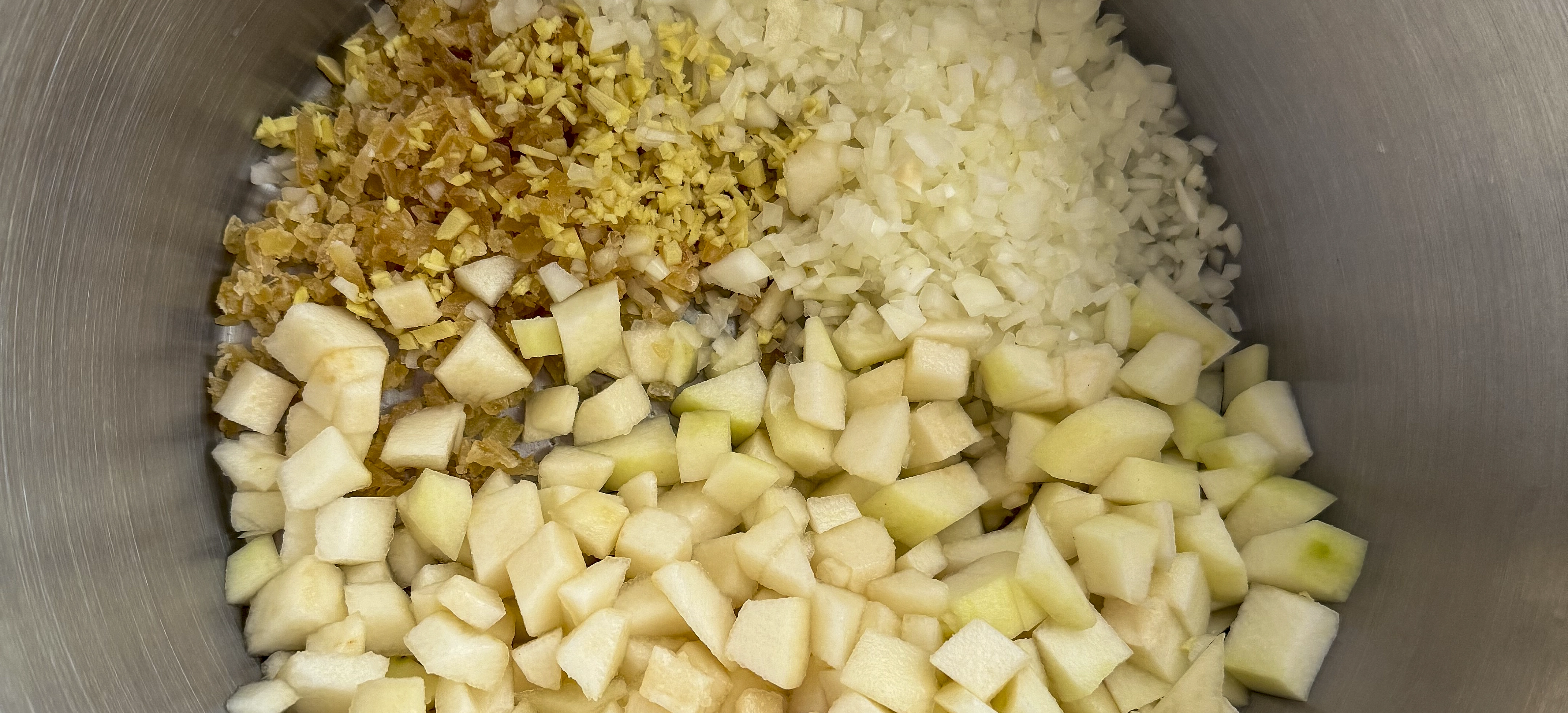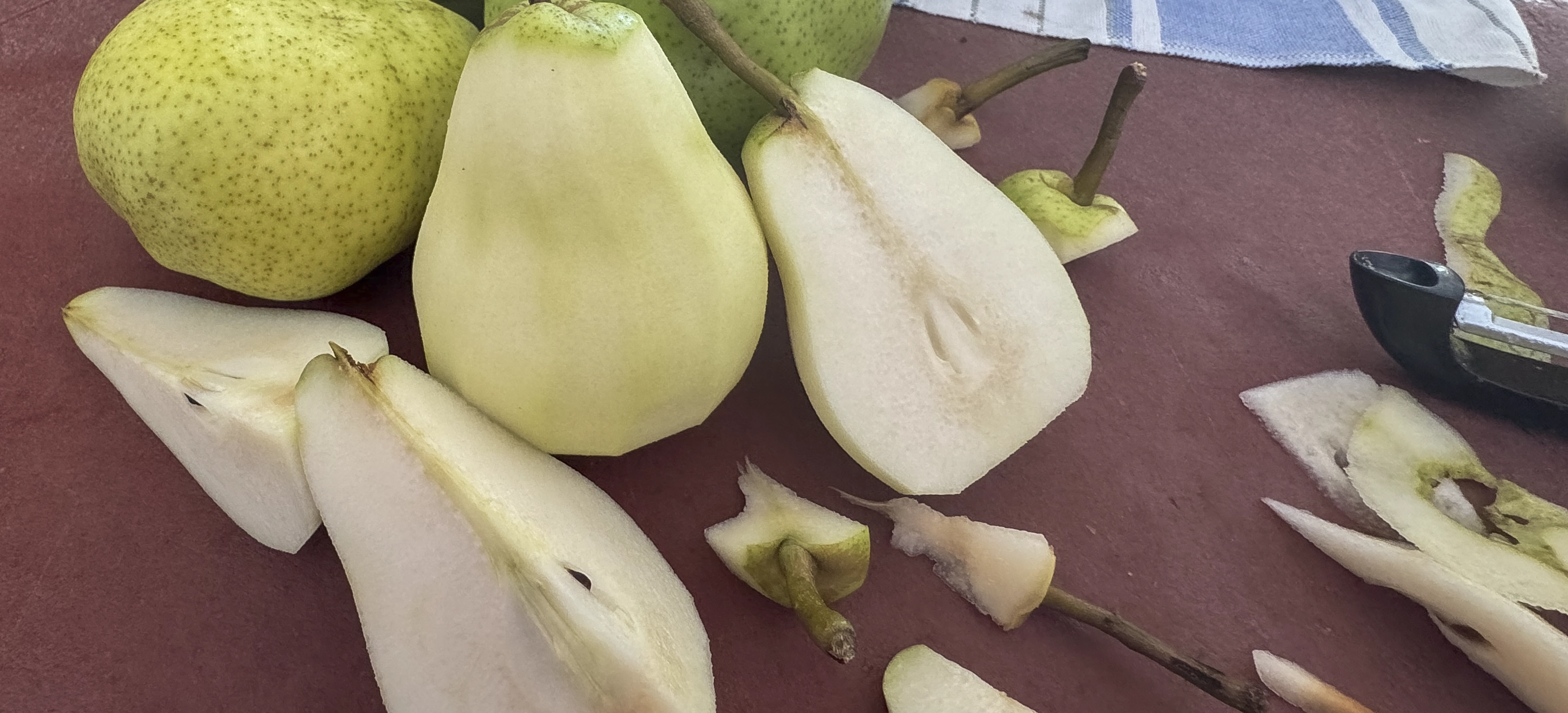Gingery Pear Chutney
- Pickles, Chutney, Relish & Sauces

If you’re addicted to the lemony and earthy flavour of ginger with its characteristic zing, then this autumn pear chutney is a must for you. Rich and buttery in flavour with a complex ginger punch, this gingery pear chutney marries perfectly with curries, cold meats, chicken, pork and duck dishes, as well as the charcuterie, ploughman's and cheese board.
Make the most of the pear season and get your pantry stocked with this “pearler” of a preserve.
- Preparation Time:
- 30 minutes
- Cooking Time:
- 80 minutes
- Quantity:
- 5 x 300 ml jars
INGREDIENTS
- 2 kg
- Cooking pears, firm
- 350g
- Brown onions
- 70g
- Preserved ginger
- 20g
- Fresh ginger
- 600 ml
- Red wine vinegar
- 2
- Oranges
- 500g
- White sugar
- 6
- Whole cloves

METHOD
Peel the pears, remove the core and dice into 1 cm (approx. ½ inch) pieces. Place immediately in a preserving or heavy bottom stainless steel pan and add the red wine vinegar. This will prevent the fruit from turning brown before you commence cooking. Discard the peel and cores. Peel and quarter the onions and chop them to approximately the same size as the fruit and put in the pan.
Prepare the two types of ginger. Peel the fresh ginger and then finely chop the fresh and preserved ginger to the same size and add to the pan.
Add the remaining ingredients- white sugar, grated orange zest and juice and whole cloves.
Stir well and place on a low-medium heat. Stir occasionally until the sugar has completely dissolved.
Bring to the boil and then turn the heat down to a gentle simmer. Cook until the pear and onion are soft and have started to break down. Stir occasionally, while simmering, and then more frequently towards the end as the chutney thickens to prevent it from sticking to the bottom of the pan and burning.
Remove from the heat and allow to cool slightly. Remove the cloves and discard.
Using a funnel, pour into warm dry sterilised screw cap sealable jars. Fill to approximately 2.5cm (1inch) from the top and seal while hot or use your preferred method.
Label and store in a cool dark place in the kitchen or pantry.
Allow the chutney to mature for at least 2 weeks, preferably 4 weeks, before eating.
NOTES
- If you are harvesting your own pears, pick while they are green and ripen in the kitchen or pantry. If you need to accelerate the ripening, place in a brown paper bag with a ripe banana. Pears are easily bruised and ripen from the inside out. Handle gently and store carefully in a single layer before using. Medium ripe cooking pears are preferred in this recipe and will give a better consistency and flavour than using overripe eating fresh pears. Over-ripe pears can develop a gritty texture.
- Choose clean ripe fruit. Do not use overripe and never use mouldy fruit as this will produce a poor-quality chutney.
- If you want a chunkier fruit texture, cut fruit into larger pieces.
- Good quality jars should be used in preserving, particularly when they are processed in a hot water bath. Thin jars often cannot withstand the temperatures and may crack either in the bath or on and or after removal. Avoid the disappointment and invest in some good jars from a homewares or preserves outlet. Select jars that have non-reactive lids as the vinegar solution can cause the lids to rust over time.
- The type and colour of the sugar and vinegar used will affect the final colour and flavour of the chutney. Malt vinegar and brown sugar will produce very dark brownish chutney with a more earthy/molasses background flavour. Red wine vinegar will add a light colour and more fruity flavour to the chutney.
- To test the chutney is cooked to the right consistency, spoon a little of the mixture on to a plate. It should hold its shape.
- Do not place a lid on the pan while cooking the chutney. Cooking it uncovered allows evaporation which helps to thicken the chutney.
- Towards the end of the cooking process, it may be necessary to stir regularly. It is important that the fruit does not stick to the bottom of the pan and burn. Your chutney will be tainted with a burnt flavour which is not very pleasant.
- Always store chutney in a cool dark place. A warm area can cause it to ferment, and bright sunlight can affect the colour.
- Chutneys are best left to mature for 2 months in a cool dark place before eating. Traditionally they were stored in the cellar or pantry. If you can’t wait that long then at least allow 2 weeks to mature.
- Cooking times are an approximation only. They are provided as a guideline as cooking time will depend upon:
- The size of preserving pan - the broader the pan the quicker the evaporation
- Degree of fruit ripeness – the riper the fruit, the sweeter and juicer the initial chutney will be
- The degree of heat when cooking – the higher the heat, the greater the boil which will produce greater evaporation
- Clove (Syzygium aronaticum)
- Cloves are the dried unopened flower buds of a tropical evergreen plant. Born in clusters of 10-15, they are picked when full size, still green but just on the verge of turning pink. The aroma is pungent, warm, aromatic, camphor-like and faintly peppery. The flavour is intensely pungent – words like medicinal, warming, lingering and numbing come to mind. Cloves bring a pleasing, palate-cleansing freshness, and sweet spicy flavour to food. However use in moderation, as it has a powerful flavour and is usually tamed by blending with other similar warming spices to soften its dominance. Look for cloves that are plump, not shriveled or broken and where the majority retain their rounded tops.
- Ginger (Zingiber officinale)
- Ginger has a hot-spice, citrusy woody taste. It’s available as a fresh underground stem, a rhizome, as a finely ground powder and preserved in sugar. The dried and preserved version is used in baking, dried is also used in spice blends whereas fresh ginger is used widely in Asian cuisine. Do not substitute dried ginger for fresh as the dried form has a stronger and more aromatic flavour. When purchasing fresh ginger, avoid older rhizomes with signs of shrivelling as the plant is drying out and the flesh can be fibrous.

